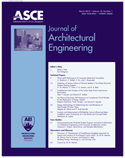Are Physical Mock-Ups Still Necessary to Complement Visual Models for the Realization of Design Intents?
Publication: Journal of Architectural Engineering
Volume 18, Issue 1
Abstract
Over time, the growing use of modern construction technologies with different tolerances and installation requirements for buildings has made reliance on full-size mock-ups essential for addressing the interfaces between design and construction. Three-dimensional (3D) and four-dimensional (4D) models have been introduced and developed over the past 10 years and are seen by some as eliminating the need for physical mock-ups. However, notwithstanding the recognized capabilities of digital models, mock-ups are still needed for capturing and eliciting the tacit knowledge that characterizes many construction operations, which cannot be visualized fully by the digital world. This argument is developed by illustrating the challenges experienced in the erection and testing of full-size mock-ups of curtain walls, particularly in constructability and functional requirements. It is argued that digital and physical models must be considered complementary tools in the realization of design intents.
Get full access to this article
View all available purchase options and get full access to this article.
Acknowledgments
The authors gratefully acknowledge the helpful comments of two anonymous reviewers and the suggestions of James Becker, Henry Irwig, and Raphael Sacks.
References
Applebaum, H. A. (1982). “Construction management: Traditional versus bureaucratic methods.” Anthropol. Q., 55(4), 224–234.
Bertelsen, S., and Sacks, R. (2007). “Toward a new understanding of the construction industry and the nature of its production.” Proc., IGLC-15, International Group for Lean Construction (IGLC), 46–56.
DeLapp, J., Ford, D., Bryant, J., and Horlen, J. (2004). “Impacts of CAD on design realization.” Eng. Constr. Archit. Manage., 11(4), 284–291.
Eastman, C., Teicholz, P., Sacks, R., and Liston, K. (2008). BIM handbook: A guide for building information modeling for owners, managers, designers, engineers, and contractors, Wiley, Hoboken, NJ.
Gibb, A. G. F., and Neale, R. H. (1997). “Management of prefabrication for complex cladding: Case study.” J. Archit. Eng., 3(2), 60–69.
Groák, S. (1992). The idea of building, E & F Spon, London.
Hartman, T., and Fisher, M. (2007). “Supporting the constructability review with 3D/4D models.” Build. Res. Inf., 35(1), 70–80.
King, R. (2001). Brunelleschi’s dome: How a Renaissance genius reinvented architecture, Penguin, New York.
Kolarevic, B., ed. (2003). Architecture in the digital age: Design and manufacturing, E&F Spon Press, New York.
Nonaka, I. (1991). “The knowledge creating company.” Harv. Bus. Rev., 69(6), 96–104.
Pietroforte, R. (1995). “Technological change of cladding systems: Implications for design and engineering arrangements.” J. Archit. Eng., 1(3), 100–107.
Pietroforte, R. (1997). “Shop drawing process of stone veneered cladding systems.” J. Archit. Eng., 3(2), 70–79.
Sacks, R., Eastman, C. E., and Lee, G. (2003). “Process improvement in precast concrete construction using top-down parametric 3-D computer modeling.” PCI J., 48(3), 46–55.
Sakhnovsky, A. A. (1974). “Testing for water penetration.” Window and wall testing. Spec. Tech. Publ. 522, ASTM, West Conshohocken, PA., 47–58.
Sawyer, T. (2008). “Subcontractors take their time adoption follows uneven paths.” Eng. News-Rec., 261, 36–37.
Schodek, D., Bechthold, M., Griggs, K., Kao, K. M., and Steinberg, M. (2005). Digital design and manufacturing, Wiley, Hoboken, NJ.
Straus, S. G., and McGrath, J. E. (1994). “Does the medium matter? The interaction of task type and technology on group performance and member reactions.” J. Appl. Psych., 79(1), 87–97.
Wright, G. (2003). “Four-sided compatibility: Curtain walls.” Build. Des. Constr., 44(6), 26–30.
Information & Authors
Information
Published In
Copyright
© 2012 American Society of Civil Engineers.
History
Received: Aug 27, 2009
Accepted: Jul 28, 2011
Published online: Aug 3, 2011
Published in print: Mar 1, 2012
Authors
Metrics & Citations
Metrics
Citations
Download citation
If you have the appropriate software installed, you can download article citation data to the citation manager of your choice. Simply select your manager software from the list below and click Download.
